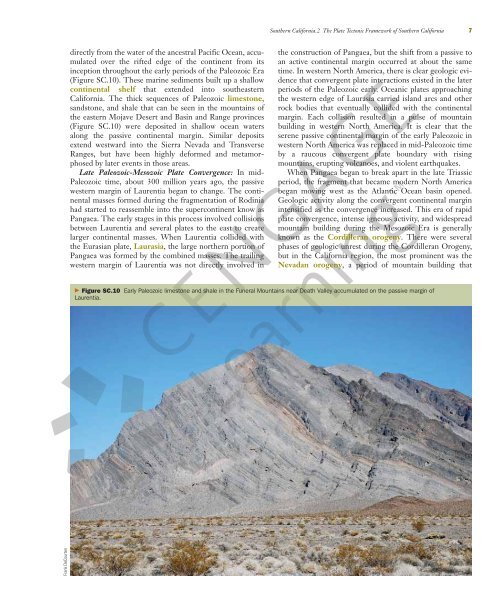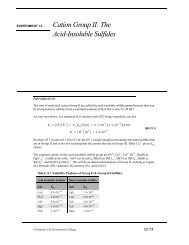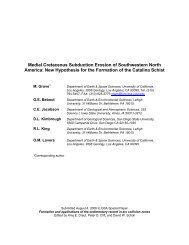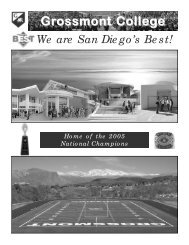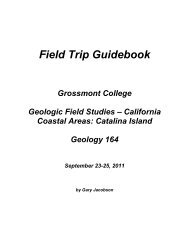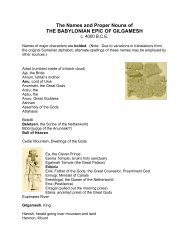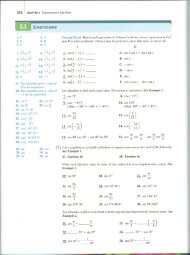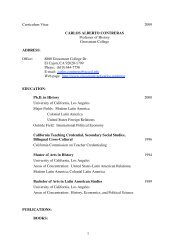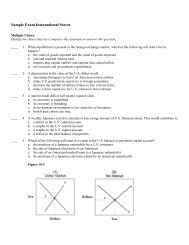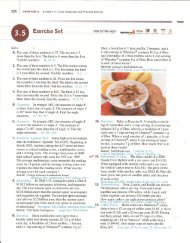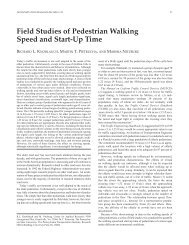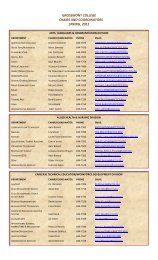Geology of Southern California.pdf - Grossmont College
Geology of Southern California.pdf - Grossmont College
Geology of Southern California.pdf - Grossmont College
You also want an ePaper? Increase the reach of your titles
YUMPU automatically turns print PDFs into web optimized ePapers that Google loves.
Frank DeCourten<br />
directly from the water <strong>of</strong> the ancestral Pacific Ocean, accumulated<br />
over the rifted edge <strong>of</strong> the continent from its<br />
inception throughout the early periods <strong>of</strong> the Paleozoic Era<br />
(Figure SC.10). These marine sediments built up a shallow<br />
continental shelf that extended into southeastern<br />
<strong>California</strong>. The thick sequences <strong>of</strong> Paleozoic limestone,<br />
sandstone, and shale that can be seen in the mountains <strong>of</strong><br />
the eastern Mojave Desert and Basin and Range provinces<br />
(Figure SC.10) were deposited in shallow ocean waters<br />
along the passive continental margin. Similar deposits<br />
extend westward into the Sierra Nevada and Transverse<br />
Ranges, but have been highly deformed and metamorphosed<br />
by later events in those areas.<br />
Late Paleozoic-Mesozoic Plate Convergence: In mid-<br />
Paleozoic time, about 300 million years ago, the passive<br />
western margin <strong>of</strong> Laurentia began to change. The continental<br />
masses formed during the fragmentation <strong>of</strong> Rodinia<br />
had started to reassemble into the supercontinent know as<br />
Pangaea. The early stages in this process involved collisions<br />
between Laurentia and several plates to the east to create<br />
larger continental masses. When Laurentia collided with<br />
the Eurasian plate, Laurasia, the large northern portion <strong>of</strong><br />
Pangaea was formed by the combined masses. The trailing<br />
western margin <strong>of</strong> Laurentia was not directly involved in<br />
<strong>Southern</strong> <strong>California</strong>.2 The Plate Tectonic Framework <strong>of</strong> <strong>Southern</strong> <strong>California</strong> 7<br />
the construction <strong>of</strong> Pangaea, but the shift from a passive to<br />
an active continental margin occurred at about the same<br />
time. In western North America, there is clear geologic evidence<br />
that convergent plate interactions existed in the later<br />
periods <strong>of</strong> the Paleozoic early. Oceanic plates approaching<br />
the western edge <strong>of</strong> Laurasia carried island arcs and other<br />
rock bodies that eventually collided with the continental<br />
margin. Each collision resulted in a pulse <strong>of</strong> mountain<br />
building in western North America. It is clear that the<br />
serene passive continental margin <strong>of</strong> the early Paleozoic in<br />
western North America was replaced in mid-Paleozoic time<br />
by a raucous convergent plate boundary with rising<br />
mountains, erupting volcanoes, and violent earthquakes.<br />
When Pangaea began to break apart in the late Triassic<br />
period, the fragment that became modern North America<br />
began moving west as the Atlantic Ocean basin opened.<br />
Geologic activity along the convergent continental margin<br />
intensified as the convergence increased. This era <strong>of</strong> rapid<br />
plate convergence, intense igneous activity, and widespread<br />
mountain building during the Mesozoic Era is generally<br />
known as the Cordilleran orogeny. There were several<br />
phases <strong>of</strong> geologic unrest during the Cordilleran Orogeny,<br />
but in the <strong>California</strong> region, the most prominent was the<br />
Nevadan orogeny, a period <strong>of</strong> mountain building that<br />
� Figure SC.10 Early Paleozoic limestone and shale in the Funeral Mountains near Death Valley accumulated on the passive margin <strong>of</strong><br />
Laurentia.


